Via Adriatica in Vasto, also known as the “Archaeological Promenade“, stands out for its numerous remnants that narrate the tales of Histonium, an ancient Roman and medieval city.
During Roman times, this place hosted the Forum, the pulsating heart of the city and the epicenter of social and political life.
Today, along the eastern side of the city, Via Adriatica offers a fascinating route through the Belvedere, the perfectly preserved Roman Baths, and other historical remains, culminating in a street marked by the chasm caused by the catastrophic landslide of 1956.
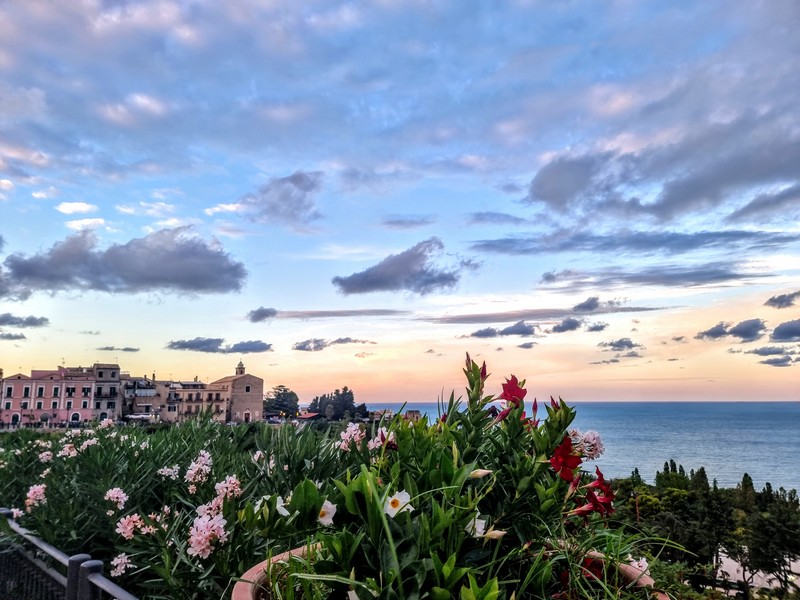
On February 22 of that year, at 12 o’clock, forty hectares of urban territory disappeared suddenly, swallowed by the earth.
As early as the 1800s, premonitory signs had alarmed administrators, but it was only in 1945 that the “wall of blades” was erected to contain the movement of the terrain.
However, the lesions that appeared in the S. Pietro district in 1955 prompted experts to evacuate the area, saving many human lives but not the buildings: dozens of buildings and a hundred and fifty apartments, including the Post Office Palace and the church of San Pietro, were tragically destroyed.
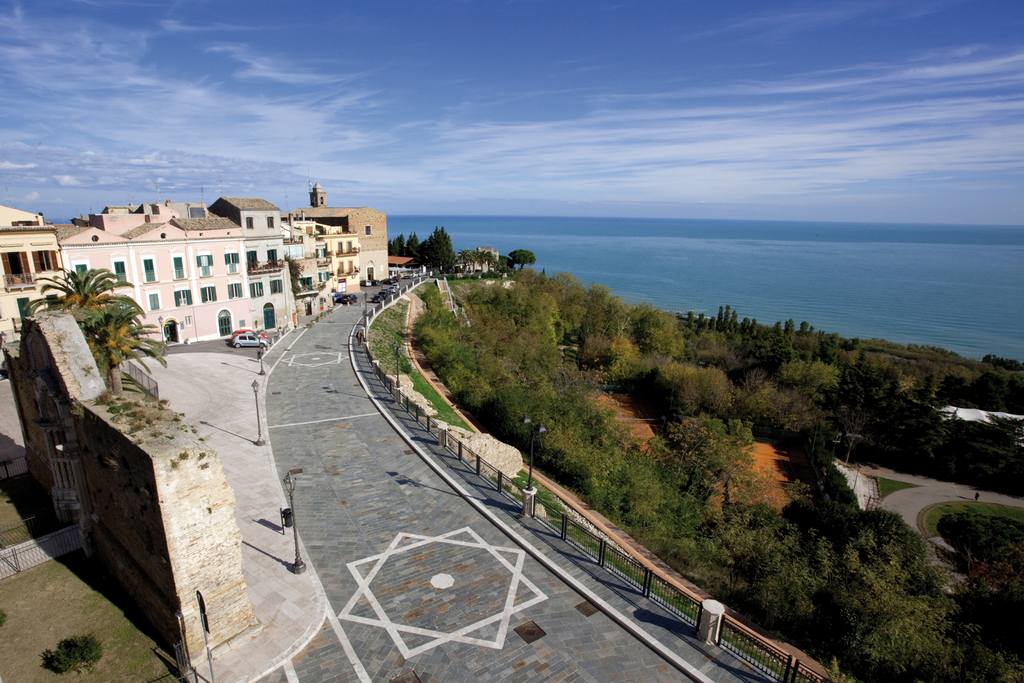
The inhabitants of Vasto refer to the area below, now home to tennis courts and a racing circuit, as “the landslide.”
Along Via Adriatica, visitors can still admire the remains of the portal of the Church of San Pietro.
The landslide of 1956 inflicted serious damage to the church’s structure, forcing its demolition.
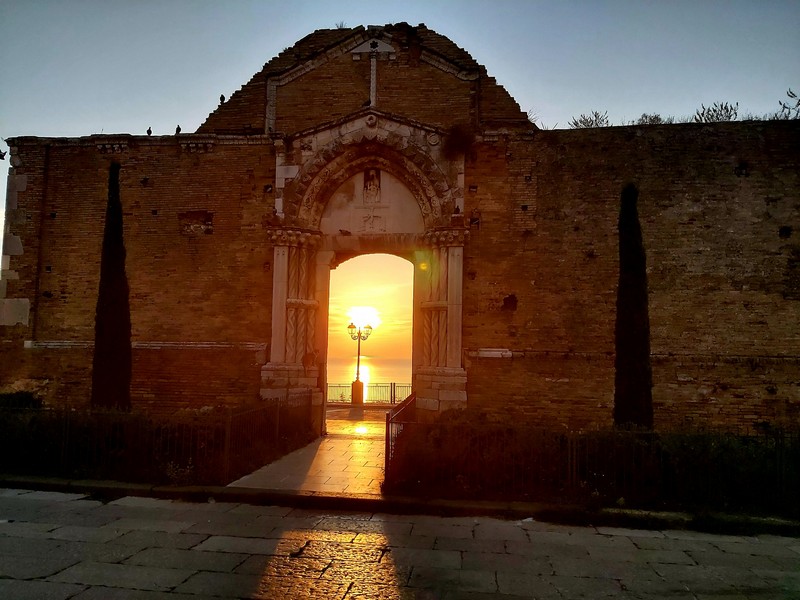
Founded on presumed remains of a temple dedicated to Ceres, the church already existed in 1047, as historical documents attest.
The ancient church had a single nave and a semi-collapsed portico added in the nineteenth century.
Particularly striking was its tall lateral brick bell tower.
Today, the magnificent late-thirteenth-century portal, the work of local sculptor Ruggero de Fragenis, adorned with a pointed arch and frescoes depicting the Madonna with the Child and the Deposition of Jesus, survives.
On the sides of the facade, the remains of the Roman walls belonging to the temple of Ceres are visible.

Ruggero de Fragenis, a renowned local sculptor, is also the author of the portals of the churches of Sant’Antonio and San Giuseppe.
Descending under the balcony, one can observe the remains of the foundation of the church’s apse, as well as other artifacts dating back to Roman times, including the presumed presence of the Forum, with its Capitolium dedicated to Jupiter, Juno, and Minerva, the Macellum, the Porticus, and the temple of Ceres.
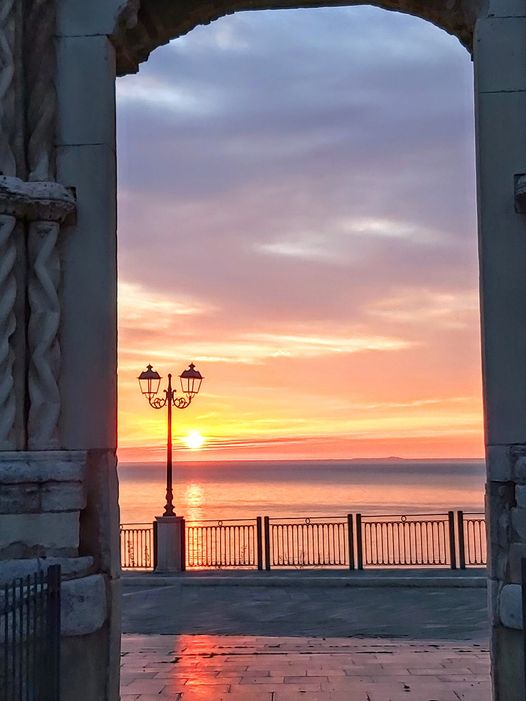
I like to imagine this portal as an ancient frame of a natural ‘painting‘ rich in colors and lights that extend all the way to the Tremiti Islands in Puglia, Italy, transmitting ever-changing emotions from dawn to the light of the full moon.
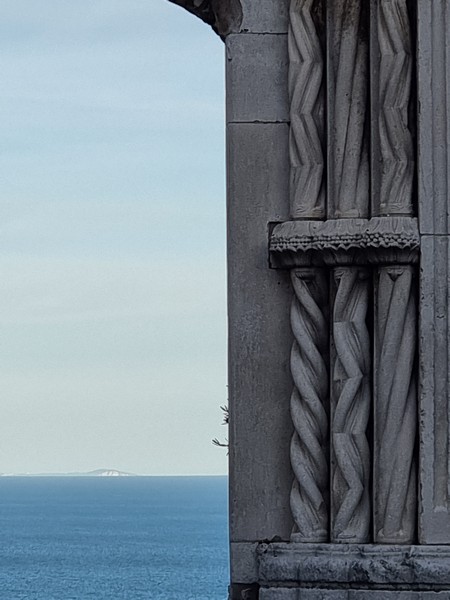
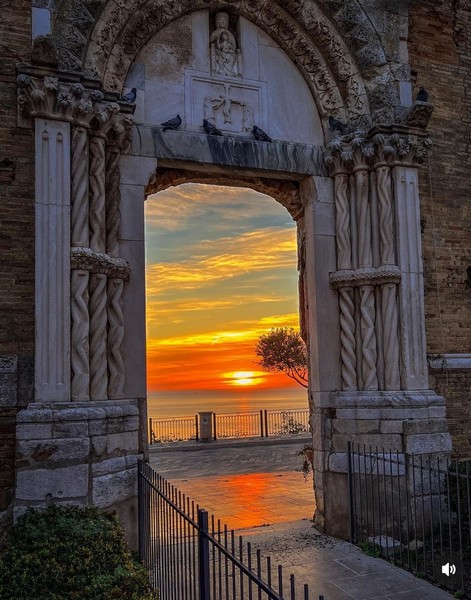
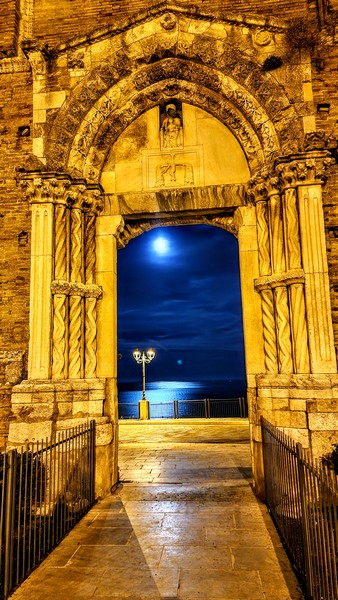
Via Adriatica, witness to ancient glories, continues to tell the story of Histonium, inviting visitors to immerse themselves in its fascinating tales.
Ready to travel to Abruzzo, Italy?
Get in touch today for more information about our tour. We are ready to help you choose the best options for your dream vacation!
And if you’re not quite ready to make an inquiry, sign up for our free email course to learn everything you need to know about planning a tour of Abruzzo.


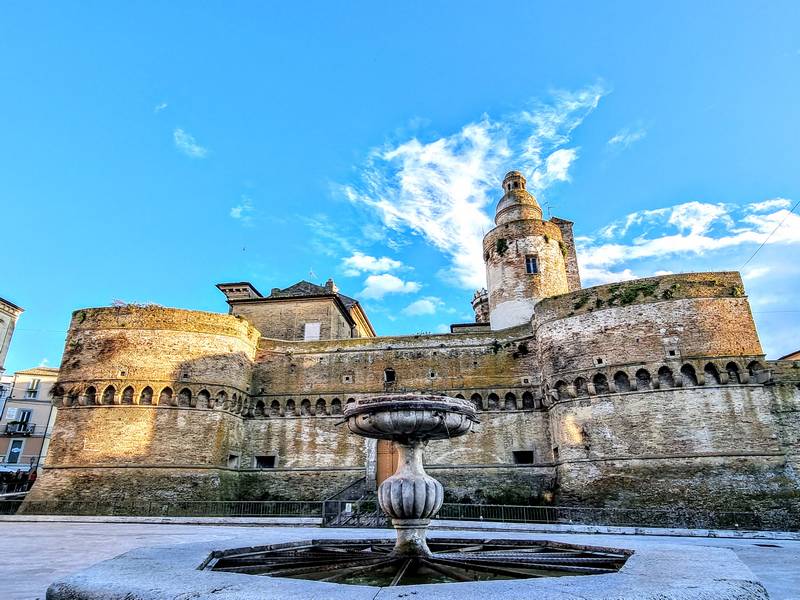


2 thoughts on “Via Adriatica in Vasto: discovering St. Peter’s Portal”
Very nice, at least somebody have started to tell the world that a beautiful part in the middle of Italy Abruzzo is the place to explore from the sea to the Gran Sasso D’Italia la Majella mountains just to mention a few the grotto di Castellana e del cavallone including the special gastronomia la zuppa di pesce Vastese.
Bisogna ricordare ai politici che si dovrebbe incoraggiare the cruse lines to stop close to shores of Adriatic sea to allow tourist to disembark from the crude liner and with a smaller boat to shores so that the tourist can enjoy the Beaty that Abruzzo can offer them.
Thanks Joe D D
Buongiorno Joe,
thank you for the kind words about our beloved Abruzzo!
We truly appreciate your support and appreciation for what we do here.
However, regarding cruises, we would like to share with you that this sector does not align with our philosophy of sustainable tourism.
You can find more information about our vision and commitment to responsible and sustainable tourism by visiting the following link: https://italiasweetitalia.com/sustainable-tourism/
We hope to welcome you to Abruzzo soon, perhaps to participate in one of our tours that reflect our values and passion for the region.
We look forward to showing you the wonders of our region!
Ciao for now
Fabrizio